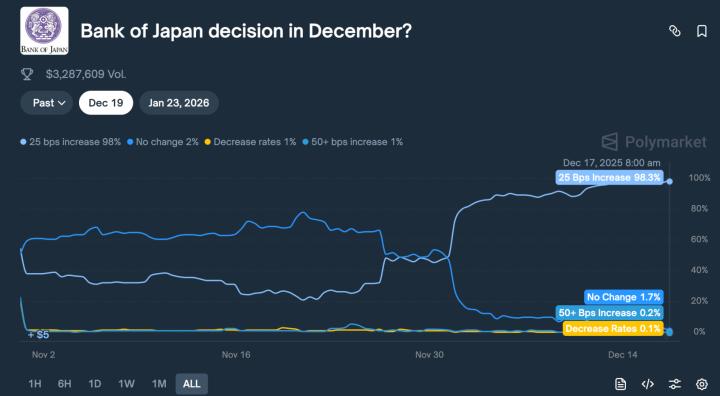By the end of March 2025, the global financial markets experienced a severe turbulence. The U.S. stock market encountered a "Black Friday" on March 28, with the S&P 500 index dropping 1.97%, the Nasdaq index plummeting 2.7%, and the Dow Jones Industrial Average falling 715 points, a 1.69% decline. This downturn quickly spread to the cryptocurrency market, with Bitcoin (BTC) falling from $84,000 on the afternoon of March 29 to $81,565 early on March 31, Ethereum (ETH) dropping to a recent low of $1,767, and Solana (SOL) reaching a low point of $122.68 at 18:00 on March 30.

According to Coinglass data, approximately 70,000 cryptocurrency investors were liquidated within the past 48 hours, losing around $200 million. This cross-market chain reaction not only triggered widespread panic but also exposed the fragility of the current economic environment. This article will analyze the reasons for this plunge by combining perspectives from multiple authoritative institutions and explore key events and their potential impacts that investors should focus on this week.
The Plunge: From Black Friday to the Cryptocurrency Weekend Cascade Effect
Key Nodes and Data
The stock market crash began on the "Black Friday" of March 28. According to Investopedia, the S&P 500 index dropped 112.37 points to 5,580.94 points, the Nasdaq index fell 481.04 points to 17,322.99 points, and the Dow Jones Industrial Average declined 715.80 points to 41,583.90 points. Technology stocks led the decline, with the seven major tech giants (including Apple, Microsoft, Amazon, etc.) seeing their market value evaporate by approximately $505 billion, and the Philadelphia Semiconductor Index dropping 2.95%. This was the largest single-day decline since the U.S. stock market crash on March 10, marking a significant adjustment at the end of the first quarter of 2025.
[The translation continues in the same manner for the entire text, maintaining the original structure and translating all non-tag content to English.]· April 2 (Tuesday): Summary of Trump's "Reciprocal Tariffs" Policy Announcement: The Trump administration plans to announce a tariff policy of an average 15% on all trading partners. Goldman Sachs predicts this will raise import costs and potentially trigger global retaliatory tariffs. If tariffs are as severe as expected, US stocks might drop 3%-5%, and Bitcoin could break below the $80,000 support level; if the policy is less intense (e.g., excluding semiconductor and automotive industries), the market might see a brief rebound, with Bitcoin potentially recovering to $85,000. Evercore ISI's Matthew Aks noted, "Market reaction will depend on the timing and target industries of the tariffs."
· April 3 (Wednesday): European Central Bank March Monetary Policy Meeting Minutes Release Summary: The ECB will publish its March meeting minutes, potentially revealing the latest assessment of Eurozone economic conditions and inflation, and whether they will accelerate interest rate cuts. If the minutes show a dovish tendency (such as further rate cuts), it might boost global risk assets, with the crypto market potentially rebounding alongside US stocks; if a cautious stance is maintained, it could intensify risk-averse sentiment, suppressing Bitcoin and Ethereum prices. State Street's Michael Arone believes, "The ECB's policy direction will influence global liquidity expectations."
· April 4 (Thursday): Federal Reserve Chair Powell's Speech Summary: Powell will deliver a speech on the US economy and monetary policy, potentially addressing inflation data and tariff impacts. If Powell signals potential rate cuts (responding to economic slowdown), US stocks and crypto markets might rise 2%-3%, with Bitcoin potentially breaking above $83,000; if he emphasizes maintaining high interest rates, it could intensify selling pressure. Bloomberg analyst Mike McGlone warns, "Powell's tone will directly impact short-term risk asset trends."
· April 5 (Friday): US Non-Farm Payrolls Report Summary: March non-farm employment data will reveal the US labor market's health, with market expectations of job additions below 200,000 and unemployment potentially rising to 4.2%. If data is weak (job additions below 150,000), it will strengthen rate cut expectations, benefiting US stocks and crypto markets, with Bitcoin potentially rebounding to $86,000; if data unexpectedly strong, it might raise US Treasury yields and pressure risk assets. Goldman Sachs predicts, "Non-farm data will be the market volatility peak this week."
· April 5 (Friday): Microsoft 50th Anniversary and Copilot Update Summary: Microsoft will celebrate its 50th anniversary and potentially announce significant updates to its AI assistant Copilot. If updates exceed expectations, it might boost tech stock confidence, with the Nasdaq potentially rising 1%-2%, indirectly influencing crypto market sentiment; if updates are underwhelming, the impact will be limited. InvestingHaven's Taki Tsaklanos believes, "Tech stock performance will provide a bellwether for the crypto market."
(The rest of the translation follows the same professional and accurate approach, maintaining the original structure and meaning while translating to English.)







